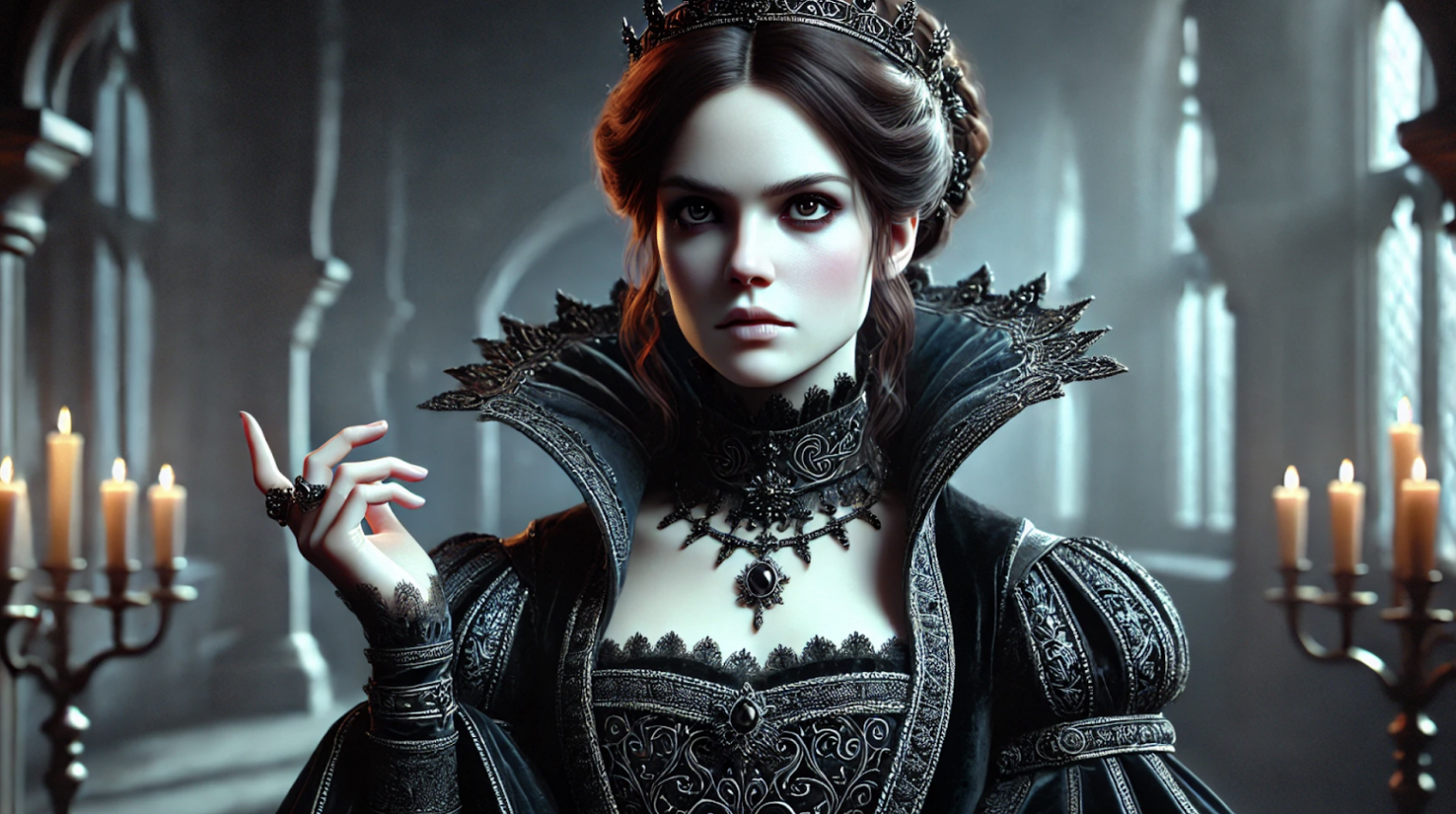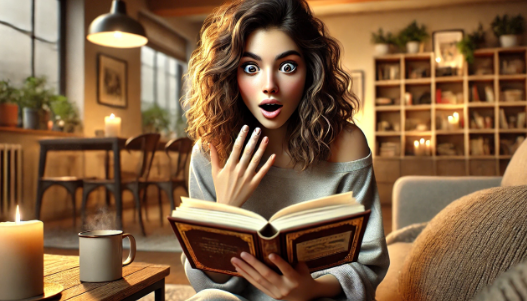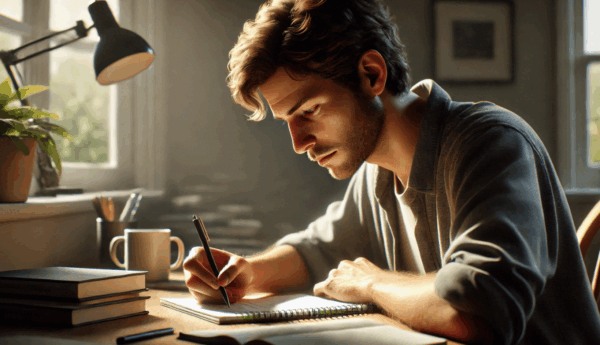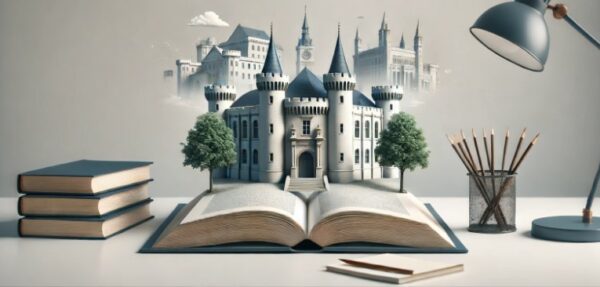Much like the anti-hero in storytelling, the self-publishing journey isn’t always neat and tidy. Authors who venture into this realm often walk a fine line between traditional expectations and the unconventional path of independence. Forget the polished, perfect narratives—today’s self-published authors are embracing the flawed, imperfect, and uniquely personal journey of bringing their work to life.
Self-publishing offers authors the chance to write their own rules, much like an anti-hero carving out their own destiny. But, just like these complex characters, the path to success is not always straightforward. Writers may face challenges like crafting a compelling narrative, designing a captivating cover, or mastering the art of marketing. It’s here that self-publishing services, including expert editing, formatting, and cover design, play a vital role—helping authors refine their work and navigate the many moral and creative gray areas that exist in the publishing world.
Just like the anti-hero’s growth through their struggles, self-publishing gives authors the freedom to make bold choices, take creative risks, and sometimes, even stumble. That’s where a writing coach can make all the difference. Offering guidance, support, and expert insight, a writing coach can help authors make the right decisions, ensuring their story stands out in a competitive market, even when the path is less than perfect.
So, just as we root for anti-heroes, we can support self-published authors in their quest to find their voice, embrace their flaws, and ultimately create something truly powerful. Whether navigating the complexities of editing your book, deciding on the right publishing platform, or developing a marketing strategy, self-publishing services are here to ensure that the journey doesn’t end in failure, but rather with a story that’s as captivating as any anti-hero’s tale.
Anti-Hero Definition: Walking the Line Between Good and Evil
What is the definition of anti-hero? At its core, an anti-hero is a protagonist who tosses aside the traditional “hero” playbook—no shining armor, no noble deeds, no selfless acts of saving the day. Instead, anti-heroes are flawed, jaded, and often driven by their desires or a thirst for justice on their terms. They might lie, cheat, or even kill to get what they want, yet somehow, we still root for them. They aren’t villains, but they’re certainly not your average, caped crusader.
What makes them so compelling is their imperfection. Unlike classic heroes like Clark Kent or Captain America, who follow a clear moral compass, anti-heroes operate in the messy gray areas of right and wrong. Their moral compasses are often lost, broken, or buried under layers of pain and unresolved trauma. But it’s this internal struggle, their depth, and the humanity they show in their contradictions that makes us connect with them—sometimes even more than the flawless heroes. They make us question: if they can be heroes despite their flaws, maybe we can too.
Your Publishing Journey Awaits – Start NowThe Core Traits of an Anti-Hero: Flawed, Complex, and Relatable
What do all anti-heroes have in common? They’re complex. Like your favorite messy coworker who somehow still gets the job done, anti-heroes don’t pretend to be perfect. They’re:
- Morally ambiguous – Their choices often fall into that ethically confusing gray area.
- Self-interest – They prioritize their own survival, revenge, or personal goals, often driven by their own self-interest.
- Haunted by demons – Whether it’s a traumatic past or deep-rooted guilt, personal baggage is a must.
- Internally conflicted – They wrestle with what’s right vs. what works for them.
- Relatable – Because let’s be honest, who hasn’t made a few questionable life choices?
This combination makes them feel human—more “us” than the picture-perfect hero who always makes the noble choice.
The Evolution of the Anti-Hero: From Literature to Film
The anti-hero, a character who defies the traditional mold of a perfect, virtuous protagonist, has been around for centuries, tracing its roots to ancient Greek and Roman literature. But it wasn’t until the 19th century that the modern definition of anti-hero truly began to take shape. This was the era of realism and naturalism—literary movements that sought to portray life in all its raw, messy, and imperfect glory. Writers like Gustave Flaubert and Fyodor Dostoevsky paved the way, introducing protagonists like Raskolnikov from Crime and Punishment, who were deeply flawed and morally torn, challenging the very ideals of heroism.
As the 20th century unfolded, the anti-hero found new life in cinema. The 1960s and 1970s saw the rise of the New Hollywood movement, where filmmakers like Martin Scorsese and Francis Ford Coppola brought gritty, morally complex characters to the screen. Movies like Taxi Driver introduced audiences to Travis Bickle, a man spiraling into madness, whose inner turmoil and questionable choices reflected the blurred lines between good and evil. These characters were far from perfect, yet their flaws and struggles made them more relatable and compelling than ever before.
The anti-hero’s evolution wasn’t just a trend—it became a powerful narrative tool, showing that even in our messiest, most morally ambiguous moments, there’s depth, humanity, and story to be found. And in the hands of writers and filmmakers, the definition of anti-hero has only grown more complex, proving that the age of perfect heroes was over, and the era of flawed, fascinating anti-heroes had just begun.
Anti-Hero vs. Anti-Villain: What’s the Difference?
They might sound alike but don’t mix them up when you’re at a dinner party (or any party, really).
An anti-hero is a flawed protagonist who walks a fine line between good and bad. Sure, they might make questionable choices or even engage in villainous acts, but at the end of the day, they’re the ones we’re rooting for. They have their demons, but we still want them to come out on top. Think of them as the “good guy” who sometimes doesn’t play by the rules.
Now, enter the anti-villain. This character might seem like a villain at first glance, but they have a twist. They usually have noble intentions or redeeming qualities—like trying to save their people—but their methods? Not so heroic. Anti-villains are willing to do whatever it takes, no matter how morally shady, to achieve what they believe is a righteous cause. So, they’re not exactly the “bad guy” we love to hate; they’re the “bad guy” we might end up feeling sorry for.
To break it down:
- Anti-hero = The good guy doing bad things for a greater purpose.
- Anti-villain = The bad guy doing good things… in a very questionable way.
It’s all about intention, but boy, does it make things interesting!
The Anti-Hero’s Path: From Selfish Motives to Complex Transformation
Forget saving the princess or slaying the dragon—the anti-hero’s journey often starts with something much messier: revenge, survival, or making rent.
Their arc usually looks like this:
- Starts with selfish or morally questionable motives
- Faces challenges that force personal growth (or self-destruction)
- Ends in either redemption or ruin
The anti-hero’s journey significantly impacts the relationships and dynamics between characters, influencing not only the anti-hero’s transformation but also the legacy left on those around them, ultimately engaging the audience through a complex portrayal of moral ambiguity.
Some anti-heroes, like Marvel’s Tony Stark, evolve from arrogant jerks into heroes. Others, like Walter White, spiral into full-blown villainy. That’s the magic of the anti-hero: you never know which direction they’ll go.
In the Gray We Trust: The Power of Moral Ambiguity
We live in a complicated world—so it’s no surprise we’re drawn to characters who reflect that. Moral ambiguity makes anti-heroes feel authentic. They make tough calls, face impossible choices, and often choose the “wrong” thing for the “right” reason.
Anti-heroes show us what it looks like to live in the gray—where choices aren’t always clear, and doing the right thing might hurt someone else. It’s this emotional tension that keeps readers and viewers hooked.
Plus, let’s admit it: watching someone break the rules (and get away with it) is a little thrilling.
Heroes with a Death Wish: Self-Destruction in Action
Want to spot an anti-hero in the wild? Look for the trail of self-destructive behavior.
Whether it’s addiction (Don Draper), vengeance (The Punisher), or pushing everyone away (BoJack Horseman), anti-heroes often sabotage their progress. They make disastrous decisions, alienate loved ones, and burn bridges like it’s their calling. Their journey is a slow spiral into self-destruction, a path fueled by their deepest flaws and unresolved trauma. This fits the anti-hero meaning, as these characters often operate in morally gray areas, driven by internal conflict.
Anti-heroes often follow a negative character arc, becoming darker with each bad choice, illustrating the rawness of human conflict. Their internal battles—guilt, grief, and a sense of unworthiness—are the driving forces behind their downfall. We don’t watch them crash and burn because we enjoy the chaos, but because we’re hoping they’ll break free from the spiral, even when we know they might not.
Sometimes they do. Sometimes they don’t. But that’s what makes their journey so hauntingly compelling.
Anti-Hero Examples in Literature and Film
Here are some iconic anti-heroes from literature and film who challenge our ideas of morality, helping us better understand the anti-hero meaning and its impact on storytelling.
Walter White – Breaking Bad
A high school chemistry teacher turned drug kingpin, Walter’s descent from family man to villain shows how easily good intentions can go astray.
Dexter Morgan – Dexter
A serial killer with a “code,” Dexter kills other killers. His internal battle between dark urges and a desire to do good keeps us hooked.
Holden Caulfield – The Catcher in the Rye
Holden embodies teen rebellion, challenging societal norms with raw vulnerability and cynical disdain, making him a relatable anti-hero despite his flaws.
Darth Vader – Star Wars
A tragic anti-hero, Vader falls from a noble Jedi to a villain but ultimately seeks redemption, proving that even the most broken can change.
Wednesday Addams – The Addams Family
Wednesday defies every “good girl” stereotype. She’s dark, sharp-witted, and unapologetically herself, showing the power of embracing individuality.
Raskolnikov – Crime and Punishment
In Dostoevsky’s novel, Raskolnikov justifies murder for a greater good, only to struggle with guilt and internal conflict that unravels his sense of morality.
Hannibal Lecter – The Silence of the Lambs
A brilliant psychiatrist and cannibalistic killer, Lecter challenges our ideas of evil, blending intelligence and horror to create an unforgettable anti-hero.
Jay Gatsby – The Great Gatsby
Obsessed with the American Dream, Gatsby’s misguided pursuit of an impossible ideal leads to his downfall, yet his tragic yearning makes him a sympathetic anti-hero.
These characters break the mold of traditional heroes, drawing us in with their complexity. The beauty of the anti-hero is that you never know where their journey will lead, but you can’t look away.
The Appeal of the Anti-Hero: Exploring Moral Gray Areas in Storytelling
Writers love anti-heroes because they’re as real as it gets. They don’t just fight mythical beasts or save the world—they fight their demons. And that internal conflict? It creates stories that are rich, layered, and incredibly engaging.
With anti-heroes, writers can dive into moral dilemmas, personal trauma, and societal injustices, all while questioning what it means to be “good.” These characters force us to view the world through a more empathetic, less judgmental lens, challenging our own beliefs in the process.
Let’s be honest—there’s something irresistible about crafting a character who lies, cheats, or even betrays others, but still manages to capture the audience’s sympathy. That’s the magic of the anti-hero. They’re flawed, they’re messy, but they’re also impossible to ignore. And that’s storytelling gold.
Standing in the Gray: Why Anti-Heroes Matter
Anti-heroes matter because they mirror us—our imperfections, our doubts, and our struggle to do good even when we’re not sure how. They inhabit that messy space between right and wrong, where most of life unfolds. It’s where we all live, and that’s what makes them so compelling.
These characters remind us that heroism isn’t always about flawless perfection. Sometimes, it’s about failing, learning, and picking yourself back up. Other times, it’s about falling, stumbling, and finding a way to rise again. No matter the path, they challenge us to think harder, feel more deeply, and view the world through a more honest lens.
So the next time you find yourself rooting for a serial killer, a drug lord, or a loner who keeps pushing everyone away, don’t worry—you’re not strange. You’re simply drawn to the anti-hero, whose flaws make them all the more real and relatable.
Why We Love Anti-Heroes and Their Appeal
Despite their flaws and questionable actions, we root for anti-heroes because they feel real. They face moral dilemmas, challenge societal norms, and make mistakes just like we do. Their internal conflicts and imperfections make them relatable and fascinating. The anti-hero definition and examples remind us that heroism isn’t about perfection—it’s about complexity, growth, and embracing life’s gray areas. They show us that even the most flawed individuals can rise to greatness.
FAQs – Anti-Hero
Q1: What is the anti-hero definition?
An anti-hero is a central character in a story who lacks the traditional qualities we associate with a hero, such as nobility, selflessness, and moral clarity. Instead, they are often flawed, morally ambiguous, and driven by their desires, making them more complex and relatable to audiences.
Q2: What is the difference between an anti-hero and an antagonist?
An anti-hero is a protagonist who exhibits qualities traditionally associated with villains, such as selfishness or moral ambiguity, but still drives the story forward and often has a sympathetic arc. An antagonist, on the other hand, is a character or force that opposes the protagonist and creates conflict, often with little to no redeeming qualities. While anti-heroes can have morally gray traits, antagonists are usually the main source of conflict and are positioned as the enemy to the protagonist’s goals.
Q3: Is the Joker an anti-hero?
No, the Joker is generally considered a villain rather than an antihero. While he does not fit the mold of a traditional villain—being chaotic and unpredictable—he lacks the core qualities of an antihero, such as a redemptive arc or fighting for the greater good. Instead, the Joker is primarily an agent of chaos, with his actions typically motivated by personal enjoyment and anarchy rather than any sense of moral justification.
Q4: What motivates an anti-hero?
An anti-hero is typically driven by personal motivations, such as revenge, survival, or a desire to achieve their own goals. They often lack the noble ideals of traditional heroes and may act selfishly or morally gray. However, their journey often involves internal conflicts, such as struggling with their actions or motivations, which adds depth to their character.
Q5: Is Deadpool an anti-hero?
Yes, Deadpool is a quintessential anti-hero. While he possesses a strong sense of humor and irreverence, he is also deeply flawed, sometimes immoral, and prone to making questionable decisions. However, Deadpool often fights for a cause and displays an unconventional form of heroism. His character blurs the lines between hero and villain, making him an anti-hero in the truest sense.
Q6: Why do people love anti-heroes?
People are drawn to antiheroes because they seem more real and relatable than traditional heroes. Antiheroes are often complex, morally ambiguous characters who make mistakes, struggle with their inner demons, and don’t always follow the rules. These imperfections make them more human and easier for audiences to empathize with. Additionally, their journeys often involve significant personal growth or moral dilemmas that resonate with real-life struggles.
Q7: Is Batman an anti-hero?
Batman is often considered an anti-hero due to his methods of justice. While he fights crime and protects Gotham City, he does so through fear and intimidation, operating outside the law. His moral code prevents him from killing, but his willingness to bend rules and act in the shadows places him in the realm of anti-heroes rather than a traditional, clean-cut hero like Superman.
Q8: Can an anti-hero be a villain?
An anti-hero is distinct from a villain, but they can often toe the line. While anti-heroes may engage in morally questionable actions or make selfish choices, their ultimate goal is often in service of something greater or at least somewhat relatable, such as personal survival or justice. Villains, in contrast, typically have destructive goals and operate without regard for the well-being of others. That said, some anti-heroes, especially those with a darker arc, can spiral into villainy if they abandon their redemptive qualities.








